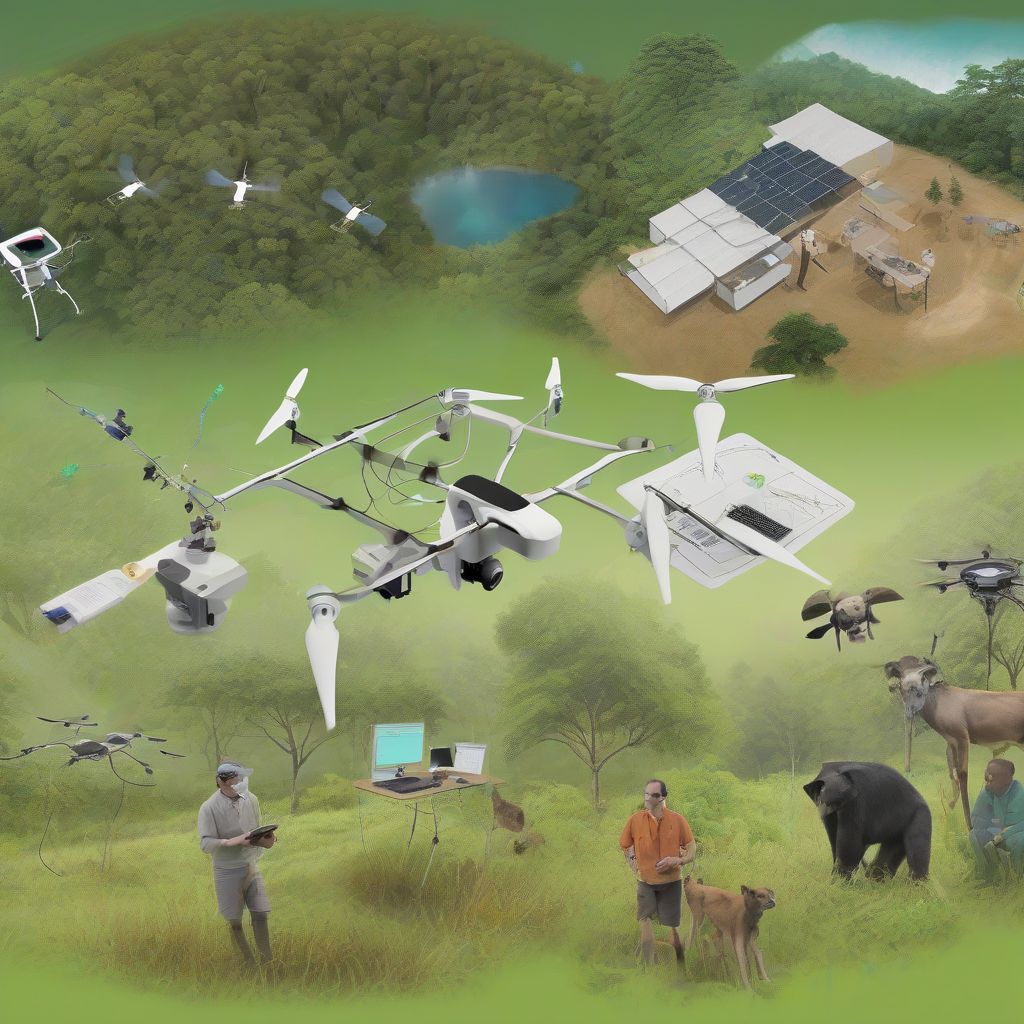Imagine a world where majestic tigers roam free, where elephants roam vast savannas, and where coral reefs teem with vibrant life. This is the world that conservation biologists are fighting for – a world where human development and the preservation of biodiversity can coexist in harmony.
The Evolving Landscape of Conservation Biology
Conservation biology, a field barely a few decades old, has rapidly evolved from a reactive approach to crisis management towards a proactive, multidisciplinary science. This dynamic field integrates principles from ecology, genetics, evolution, and even social sciences to tackle the complex challenges facing our planet’s biodiversity.
Cutting-Edge Technologies Revolutionizing Wildlife Preservation
One of the most exciting aspects of modern conservation is the integration of groundbreaking technologies:
- Genomic Analysis: By analyzing the DNA of endangered species, scientists can understand their genetic diversity, track populations, and develop tailored conservation strategies. Imagine identifying poaching hotspots by analyzing the DNA of confiscated ivory – this is the power of genomics in action.
- Remote Sensing and Satellite Tracking: Satellites equipped with high-resolution cameras and sensors allow us to monitor deforestation patterns, track animal migration, and even identify poaching activities in real-time, offering a bird’s eye view of the planet’s health.
- Artificial Intelligence and Machine Learning: By analyzing massive datasets, AI can help predict areas of high conservation priority, model the impact of climate change on species distribution, and even identify individual animals from camera trap images, automating tasks that once required countless hours of human effort.
 Conservation Technology
Conservation Technology
Community-Based Conservation: Empowering Local Guardians
Recognizing that conservation efforts are most effective when driven by local communities, a significant shift has occurred towards community-based conservation. This approach empowers indigenous peoples and local stakeholders to become active participants in managing their natural resources.
- Traditional Ecological Knowledge: By incorporating the invaluable knowledge and practices of indigenous communities, who have lived in harmony with nature for generations, we gain a deeper understanding of ecosystem dynamics and sustainable resource management.
- Economic Incentives for Conservation: Creating sustainable livelihood opportunities linked to conservation, such as ecotourism or sustainable harvesting initiatives, provides tangible benefits to local communities, fostering a sense of ownership and responsibility towards protecting their natural heritage.
Addressing the Global Wildlife Trade: A Collective Responsibility
The illegal wildlife trade, driven by demand for exotic pets, traditional medicine, and luxury goods, represents a grave threat to countless species.
- Strengthening Law Enforcement and Cross-Border Collaboration: International cooperation is crucial to dismantle organized criminal networks involved in trafficking. Increased enforcement efforts, coupled with stricter penalties and collaborative law enforcement strategies, are essential to disrupt this destructive trade.
- Changing Consumer Behavior: Raising awareness among consumers about the devastating impact of their choices is paramount. By promoting ethical alternatives and encouraging people to say no to products fueled by illegal wildlife trade, we can help reduce demand and protect vulnerable species.
Looking Ahead: Challenges and Opportunities in Conservation
While significant progress has been made, numerous challenges still lie ahead. Climate change, habitat loss, and emerging diseases continue to exert pressure on global biodiversity.
- Climate Change Mitigation and Adaptation: Integrating climate change mitigation and adaptation strategies into conservation planning is crucial. This includes identifying and protecting climate-resilient areas, implementing strategies to help species adapt to changing conditions, and reducing our own carbon footprint.
- Sustainable Development and Land-Use Planning: Balancing human development needs with the protection of biodiversity requires careful land-use planning. By incorporating conservation principles into infrastructure projects, promoting sustainable agriculture, and establishing protected areas, we can minimize our impact on natural ecosystems.
[amazon bestseller=”wildlife conservation”]
A Call to Action: Every Individual Can Make a Difference
The future of wildlife preservation rests on our collective action. Whether it’s supporting conservation organizations, reducing our consumption of unsustainable products, or simply spreading awareness about the importance of biodiversity, each one of us has a role to play in safeguarding our planet’s natural heritage for generations to come.
Let’s embrace the advancements in conservation biology, but let’s also remember that technology alone cannot solve this complex challenge. It is through our collective will, our commitment to sustainable practices, and our unwavering respect for the natural world that we can truly make a difference. The time to act is now.
